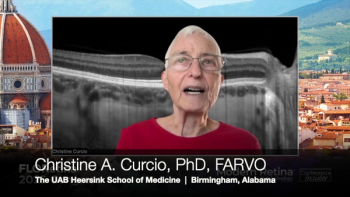
Predictors of visual outcome after successful rhegmatogenous retinal detachment repair are identified
Important predictors of postoperative visual outcome after successful successful rhegmatogenous retinal detachment repair have been identified.
Important predictors of postoperative visual outcome after successful successful rhegmatogenous retinal detachment repair have been identified in a study published in Retina.
Dr Magda Gharbiya et al., Department of Ophthalmology, University of Rome, Italy, included 35 patients with preoperative macula-on rhegmatogenous retinal detachment or macula-off rhegmatogenous retinal detachment. All patients underwent scleral buckling surgery and the Early Treatment Diabetic Retinopathy Study was used to measure best-corrected visual acuity (BCVA). Microperimetry and SD-OCT were also conducted on the same day.
SD-OCT was used to measure foveal centre retinal thickness, central 1 mm subfield thickness and outer nuclear layer thickness. The team also assessed the presence or absence of epiretinal membrane, intraretinal fluid and subretinal fluid.
Additionally, the investigation determined the intermediate line as disrupted or complete and identified the status of the external limiting membrane and the inner/outer segment junction. Correlations between SD-OCT findings and postoperative BCVA or retinal sensitivities for central 12° were evaluated.
SD-OCT retinal measurements of the outer nuclear layer thickness strongly correlated with postoperative BCVA and retinal sensitivities. BCVA was also highly correlated with the status of the external limiting membrane, inner/outer segment junction and intermediate line.
Outer nuclear layer thickness and the status of the intermediate line were identified as the most important predictors of visual outcome, as multivariate analysis demonstrated.
Newsletter
Get the essential updates shaping the future of pharma manufacturing and compliance—subscribe today to Pharmaceutical Technology and never miss a breakthrough.








































